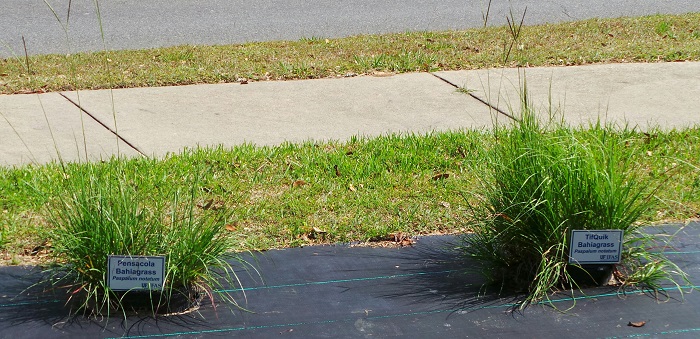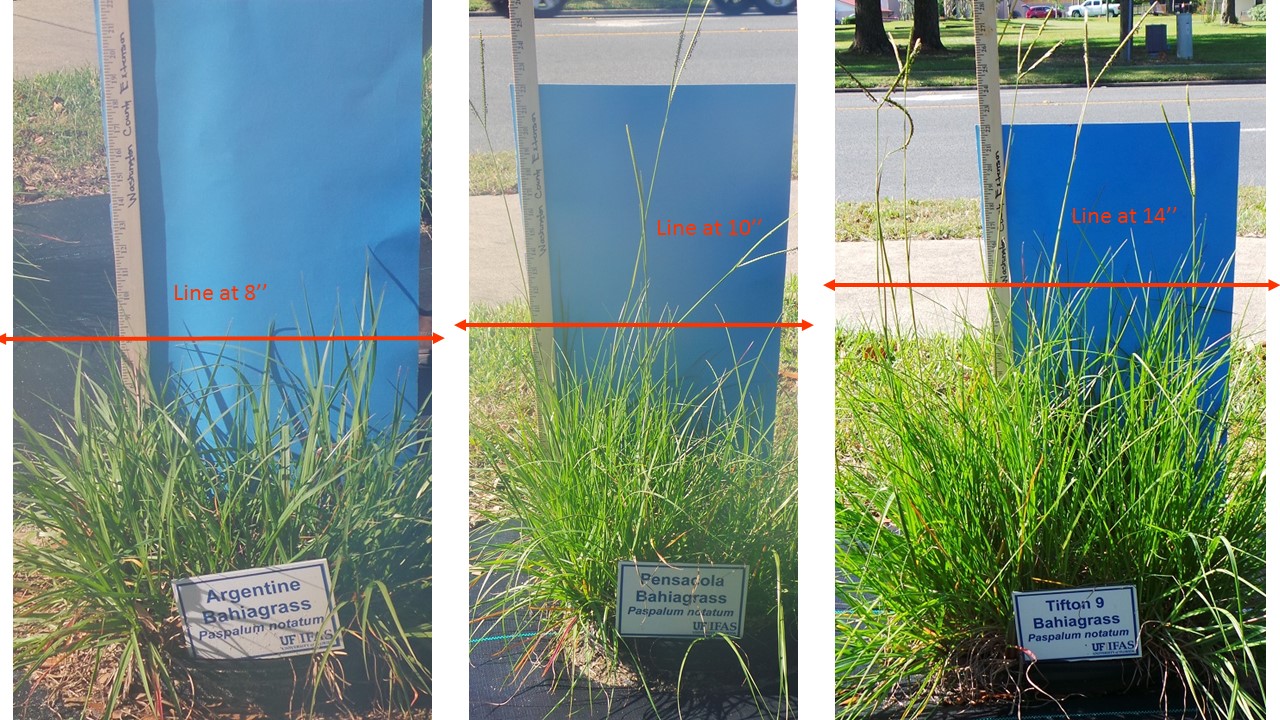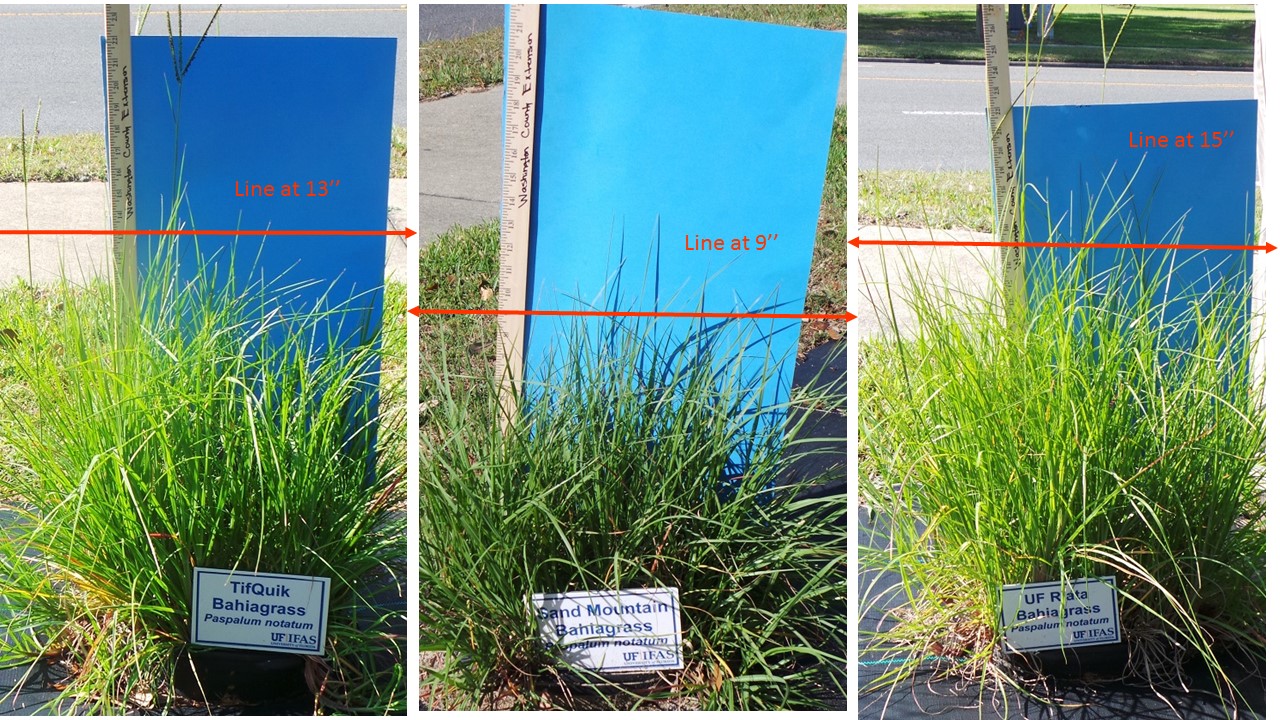Let me begin with a disclaimer; this article contains no research data and no recommendations, but only some observations that I thought might be useful to those of you thinking about perennial forage options.
All of the pictures included in this article were taken in the Forage Demonstration Garden at the Washington County Extension Office in Chipley, on May 11th. Similar gardens can be found at most of the extension offices throughout the Panhandle. These gardens were installed last summer giving all the plants a chance to get acclimated and established prior to going into winter dormancy. As the different forage varieties came out of dormancy and started growing this spring they each performed quite differently. These varietal differences are to be expected but they are vividly displayed in the demonstration gardens where multiple varieties are grown in such close proximity.

Six bahiagrass varieties in the Forage Demonstration Garden in Washington County.
From lower left to right the varieties are; Argentine, Sand Mountain, Pensacola, Tifton 9, TifQuik, UF Riata. The rest of the front row are harvested limpograss varieties. Photo Credit: Mark Mauldin
The variation in the forage yields of bahiagrass varieties are largely a product of the length of their growing season. Newer varieties have been selected to have less sensitivity to day length resulting in earlier emergence in the spring and longer persistence in the fall. At the peak of the growing season all of the varieties grow at approximately the same rate. There are six varieties of bahiagrass in the garden (Argentine, Sand Mountain, Pensacola, TifQuik, Tifton 9, and UF Riata). A quick glance at their growth thus far this spring bares out the differences in length of growing season. While increased yields are generally a good thing in forage varieties, on some operations longer growing seasons may not be. As previously stated, there is no recommendation here, simply observations and food for thought.
Which of these varieties appear to provide the earliest available grazing? Which of these varieties might work well with overseeded winter annuals? Questions like these need to be addressed when selecting a forage variety. Understanding the differences in the varieties is the only way to accurately answer the questions that are key to your operation. For a more in-depth and scientific comparison of the common bahiagrass varieties see What’s the Best Grass for Pastures in the Panhandle. To see the varieties in person contact your county’s Ag Extension Agent.

Note the additional growth exhibited by TifQuik when compared to Tifton 9. TifQuik has been selected for less day length sensitivity, hence a longer growing season. Photo Credit: Mark Mauldin

Close-ups of Argentine, Pensacola, and Tifton 9 bahiagrass taken on May 11, 2016. All varieties have been managed exactly the same. Photo Credit: Mark Mauldin

Close-ups of TifQuik, Sand Mountain, and Riata bahiagrass taken on May 11, 2016. All varieties have been managed exactly the same. Photo Credit: Mark Mauldin
- Peanut Maturity Update – 10/9/25 - October 10, 2025
- Fall Can be a Great Time for Vegetation Management - October 3, 2025
- Peanut Maturity Update – 9/25/25 Edition - September 26, 2025
